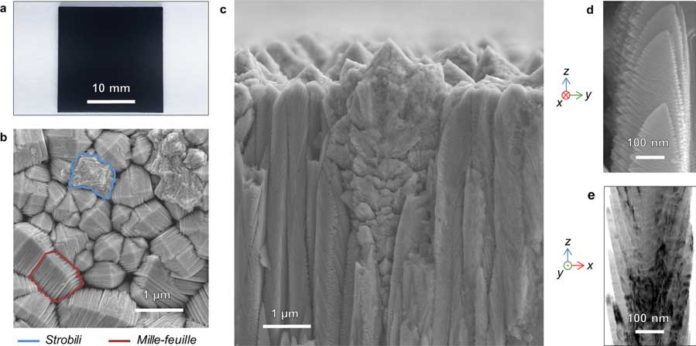Undoubtedly, TiO2 has received much attention as a possible antimicrobial material due to its well-known photocatalytic activity (PCA) and self-cleaning properties. It is used in sunscreens because it has the ability to absorb radiation. This action creates energy, which is expressed as oxygen ions and oxygen ions are deadly to bacteria. TiO2 is, therefore, ideal for use on surfaces such as door handles in environments where sterility is a priority, such as hospitals.
In a new study, a team of scientists at the University of Canterbury had taken a step forward toward developing germ-proof surface coatings for environments such as hospitals. Focusing on the visible spectrum enhancement of photocatalytic activity, scientists report TiO2 with a high degree of nanostructure, deposited on stainless steel as a solid layer more than 10 μm thick by pulsed-pressure-MOCVD.
Research lead UC Professor Susan Krumdieck said, “TiO2 is famously bright white or transparent, but one day the coating came out all black. We set it aside because we really didn’t know what had happened. But then some undergraduate project students tested it for the self-cleaning performance, and it was so photocatalytically active without any UV radiation that we knew we had discovered something new.”
Professor Krumdieck spearheaded the inventive coating technology amid her Ph.D. at the University of Colorado in Boulder, United States, and proceeded with her examination in New Zealand at UC, winning a Marsden Fund grant to investigate beat weight vacuum handling, which had not been utilized before in research or in industry. This was trailed by an aggressive financing gift with Associate Professor Mark Jermy to team up with the best college in Taiwan.
In any case, Professor Krumdieck and her group of 14 interdisciplinary UC scientists still had two difficulties to overcome– how to fix a TiO2 covering onto something like an entryway handle, and how to actuate it without UV radiation. The new dark TiO2 held the way to both.
Research associate Tim Kimmett at Callaghan Innovation comprehended the riddle.
Professor Krumdieck said, “We spent a fun science day playing with the Scanning Electron Microscope and X-ray diffractometer and really marveling at how different this material was. We knew had had a new material due to the strange nanostructures we were seeing and of course, the striking black color.”
A couple of months after the fact, Professor Krumdieck was awarded a visiting scientist fellowship at Université Grenoble Alpes in France and took a few samples of the black coating with her. Scientists at the SiMAP Institute were charmed that the material could be equivalent to white TiO2 as indicated by investigation, yet rather than the run-of-the-mill smooth pyramid crystals of TiO2, the French group, driven by Professor Raphaël Boichot, found that the crystals were nanostructured in manners beforehand just conceivable by aqueous development of individual nanoparticles.
Professor Boichot said, “The material could have visible light antimicrobial activity. When I got back to UC, I was lucky to run into Professor Jack Heinemann who is an expert in microbiology, and he worked with his students to set up a testing system.”
“Sure enough, the bacteria did not stand a chance – even after a short time in visible light.”
With no requirement for radiation to stimulate the new type of TiO2 and an adjusted nanostructure that empowers the compound to be settled in coatings, the conditions are directly for the multi-disciplinary group to advance to creating commercial applications.
The UC researchers have successfully deposited the black coating onto a door handle, and are now working with several companies to complete the engineering development science needed for designing and upscaling for advanced manufacture. Interested international companies are watching progress and hoping the black TiO2 will soon be warding off germs on hospital bed rails and door handles around the world.
The research has been published in the journal Nature Magazine.
